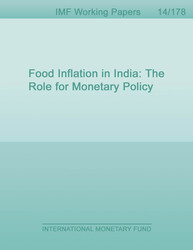
Food Inflation in India: The Role for Monetary Policy
Indian food and fuel inflation has remained high for several years, and second-round effects on core inflation are estimated to be large. This paper estimates the size of second-round effects using an estimated reduced-form general equilibrium model of the Indian economy, which incorporates pass-through from headline inflation to core inflation. The results indicate that India's inflation is highly inertial and persistent. Due to second-round effects, the gap between headline inflation and core inflation decreases by about three fourths within one year as core inflation catches up with headline inflation. Large second-round effects stem from several factors, such as the high share of food in household expenditure and the role of food inflation in informing inflation expectations and wage setting. Analysis suggests that in order to durably reduce the current high inflation, the monetary policy stance needs to remain tight for a considerable length of time. In addition, progress on structural reforms to raise potential growth is critical to reduce the burden on monetary policy.
Publication date: September 2014
ISBN: 9781484392096
$18.00
Add to Cart by clicking price of the language and format you'd like to purchase
Available Languages and Formats
| English |
Prices in red indicate formats that are not yet available but are forthcoming.
Topics covered in this book
This title contains information about the following subjects.
Click on a subject if you would like to see other titles with the same subjects.
Economics- Macroeconomics , Economics / General , International - Economics , Monetary policy , forecasting , food inflation , India
Summary
Copyright © 2010 - 2024
Powered by:
AIDC



